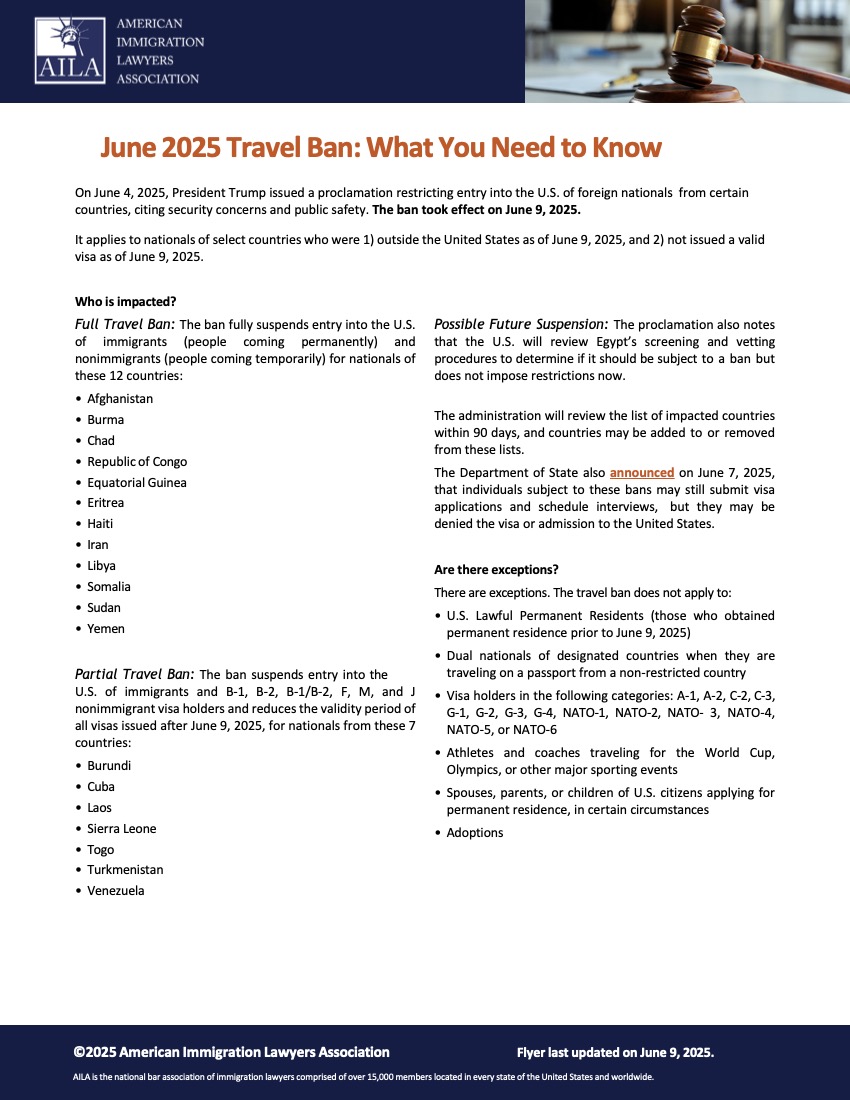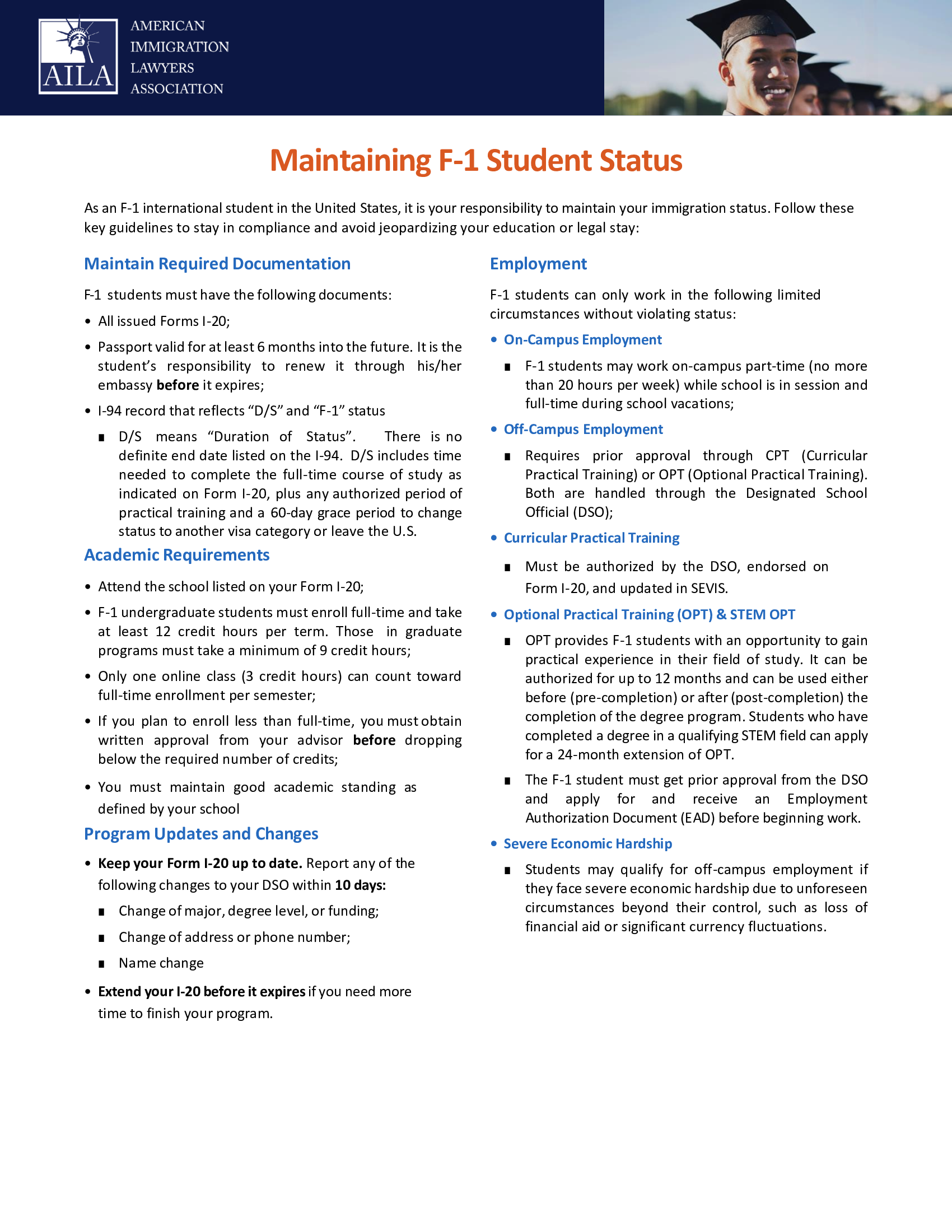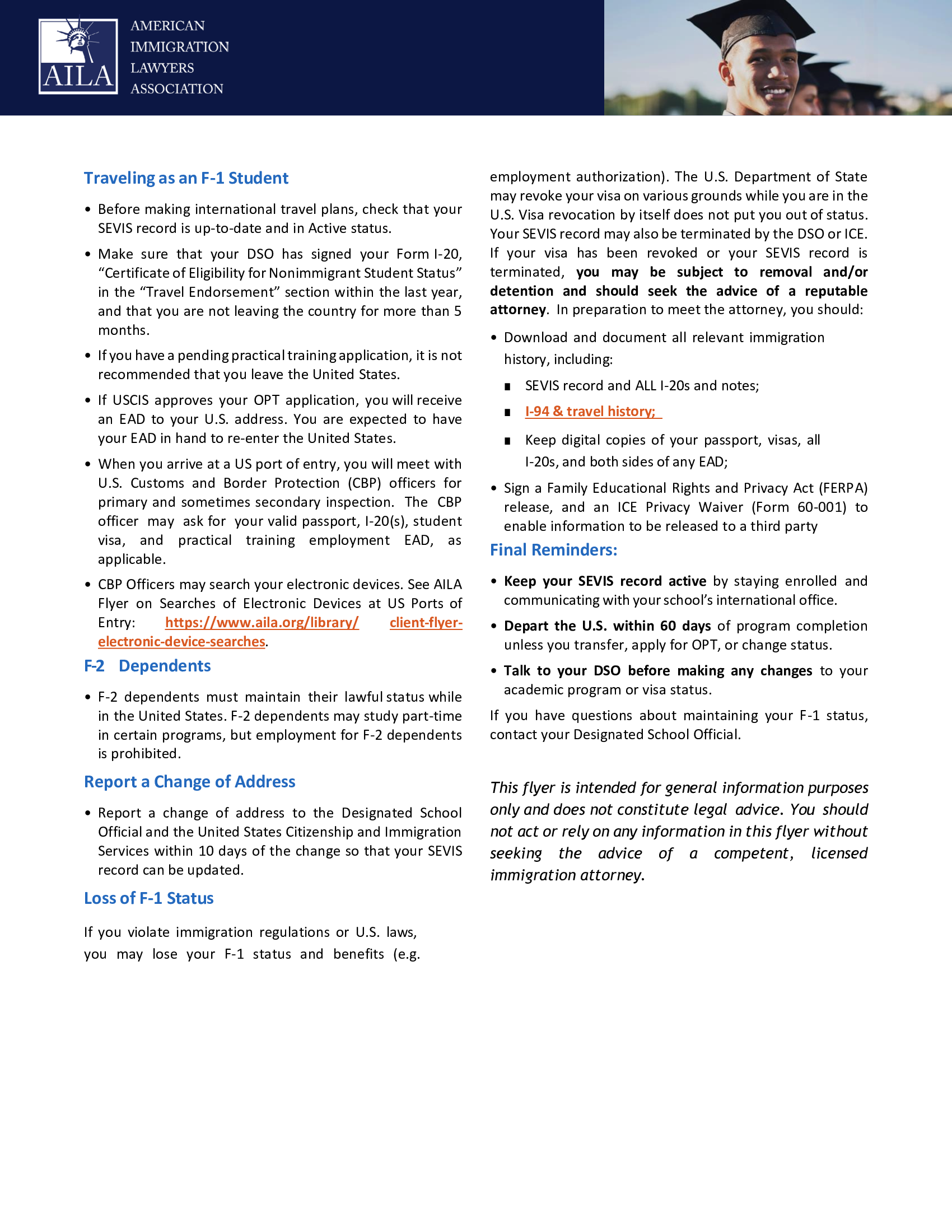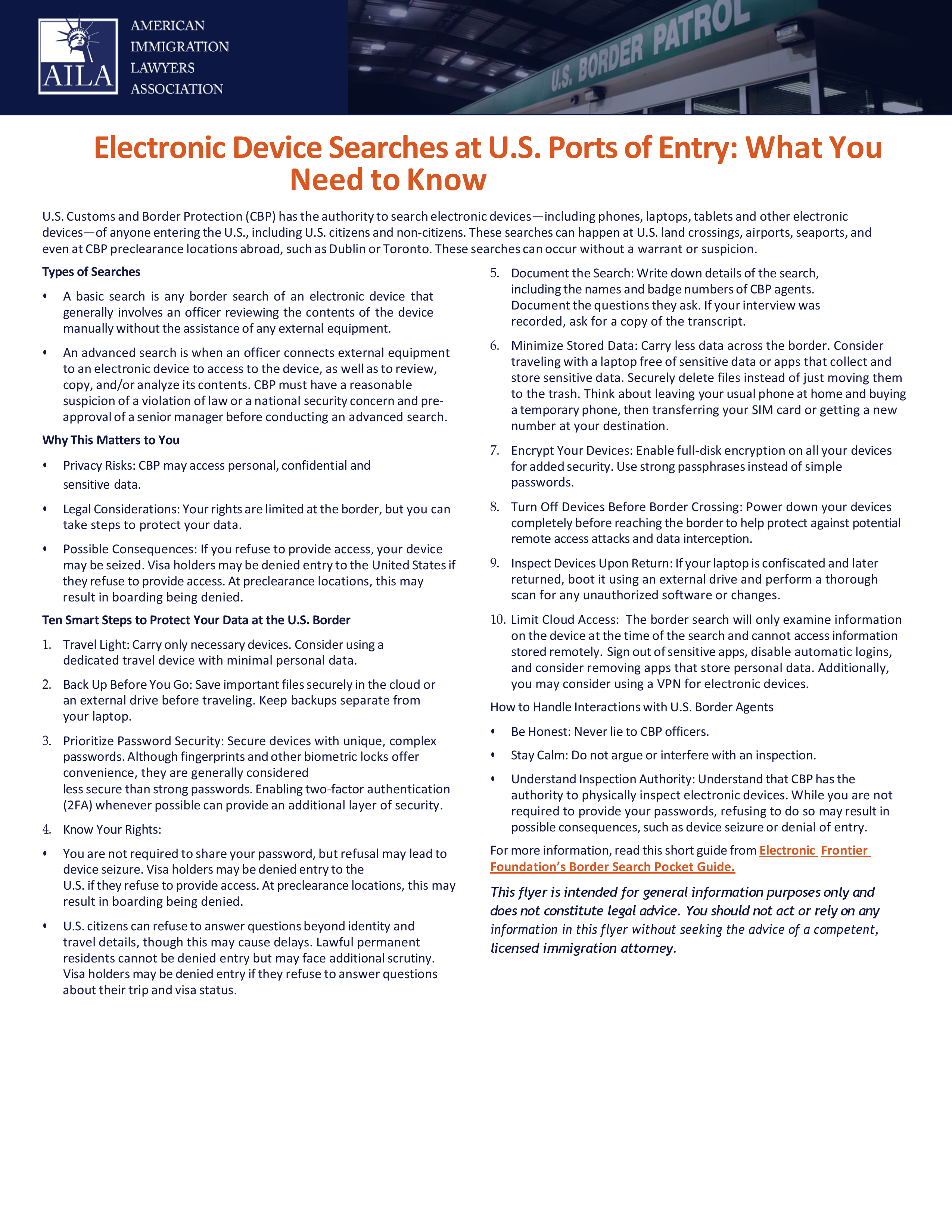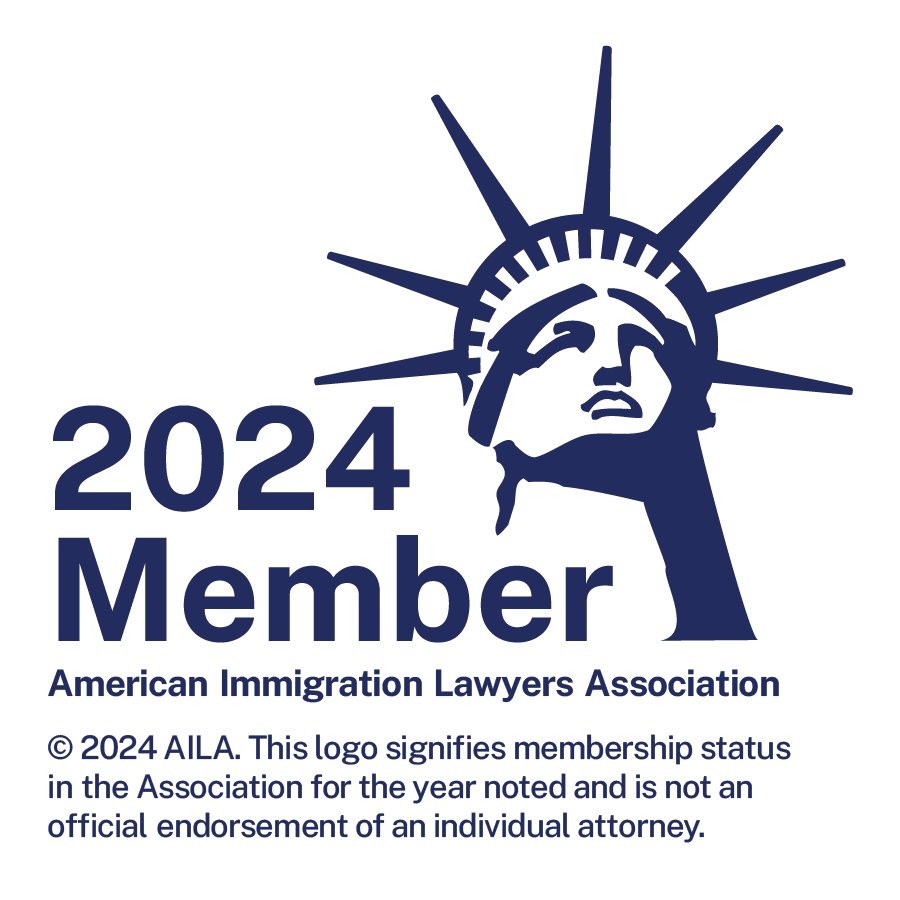Maintaining F-1 Student Status
REAL IDs Required for Domestic Air Travel in the U.S.
Beginning May 7, 2025, you will need a REAL ID-compliant driver license with a gold star, a valid passport, or U.S. military ID to travel by air in the U.S. For a list of acceptable identification documents, visit: https://www.tsa.gov/travel/
Alien Registration Requirement Goes Into Effect April 11, 2025
Travel Ban List Proposed by the Trump Administration
Electronic Device Searches at U.S. Ports of Entry
H-1B Cap Registration Information for FY 2026
TRAVEL WARNING
International travel for nonimmigrants is potentially risky until we have more clarity on visa processing and the inspection and admission processes under the Trump Administration. Consequently, if you need to apply for a new visa, such as an H-1B, to return to the U.S., consider postponing your trip.
FY 2026 H-1B CAP REGISTRATION INFORMATION
USCIS announced that the initial registration period for FY2026 H-1B cap subject petitions will open at noon Eastern on March 7 and close at noon Eastern on March 24. USCIS intends to notify those selected in the lottery by March 31. The registration fee this year is $215.
Employers must use a USCIS online account to register each beneficiary for whom they wish to file an H-1B petition. Employers can create an account here: https://my.uscis.gov/ and information can also be found here: https://www.uscis.gov/
If you are an employer who had an H-1B registrant account for the FY 2021– FY 2024 H-1B registration seasons, but you did not use the account for FY 2025, your existing account will be converted to an organizational account after your next log in. First-time registrants can create an account at any time.
Update for Employers with TPS Venezuela Beneficiaries
EADs with a Category Code of A12 or C19 and a card expiration date of March 10, 2024, or Sept. 9, 2022, associated with the 2021 TPS designation of Venezuela, expire on March 10, 2025. Employers must reverify 2021 TPS Venezuela beneficiaries who presented these EADs before they start work on March 11, 2025.
Beneficiaries of the 2023 TPS Venezuela designation who presented an EAD with a Category Code of A12 or C19 and an expiration date of April 2, 2025, must be reverified before they start work on April 3, 2025.
For more information go to https://www.uscis.gov/i-9-
Know Your Rights If ICE Visits Your Home
How to Correct I-94 Document Errors
- 1
- 2
- 3
- …
- 14
- Next Page »

